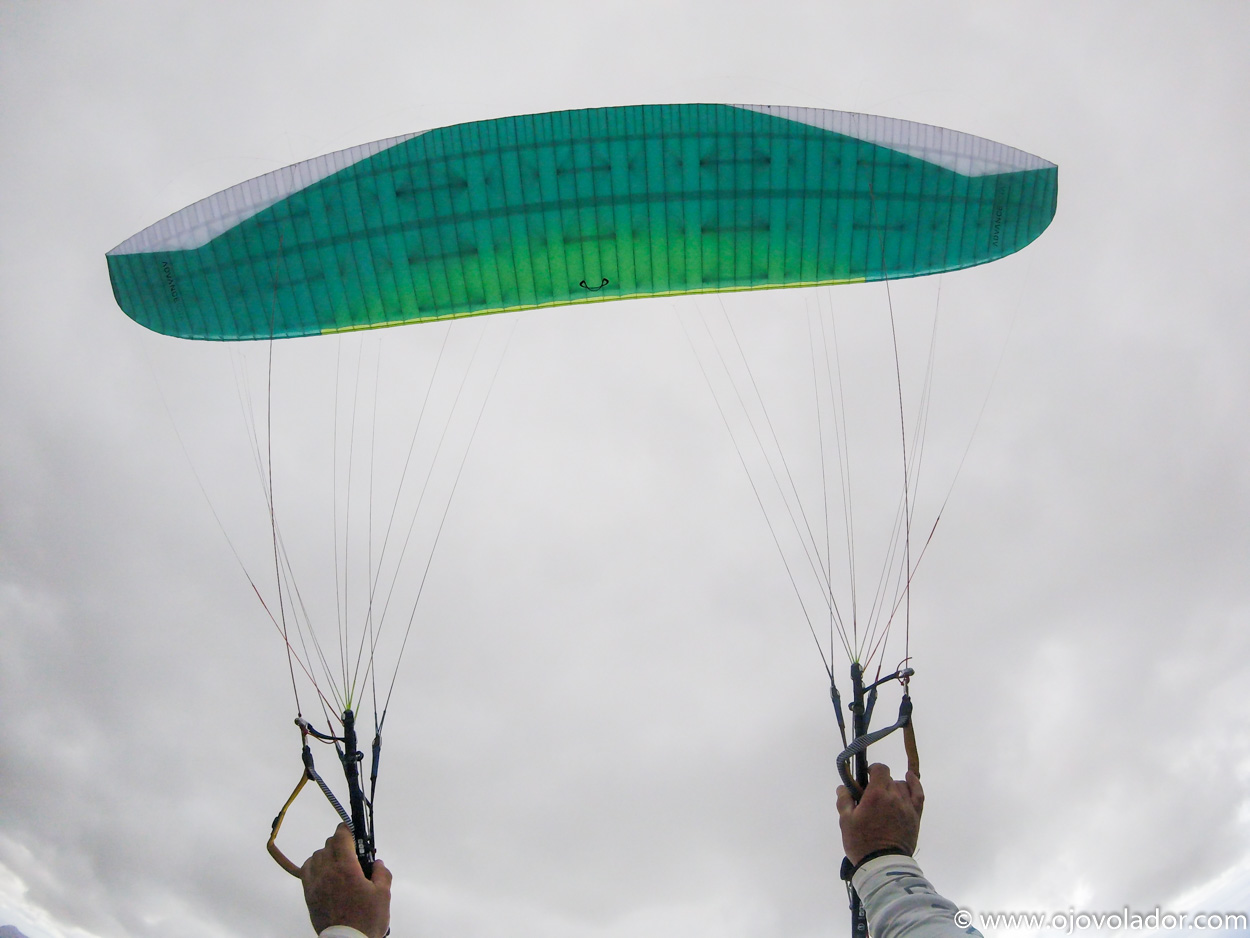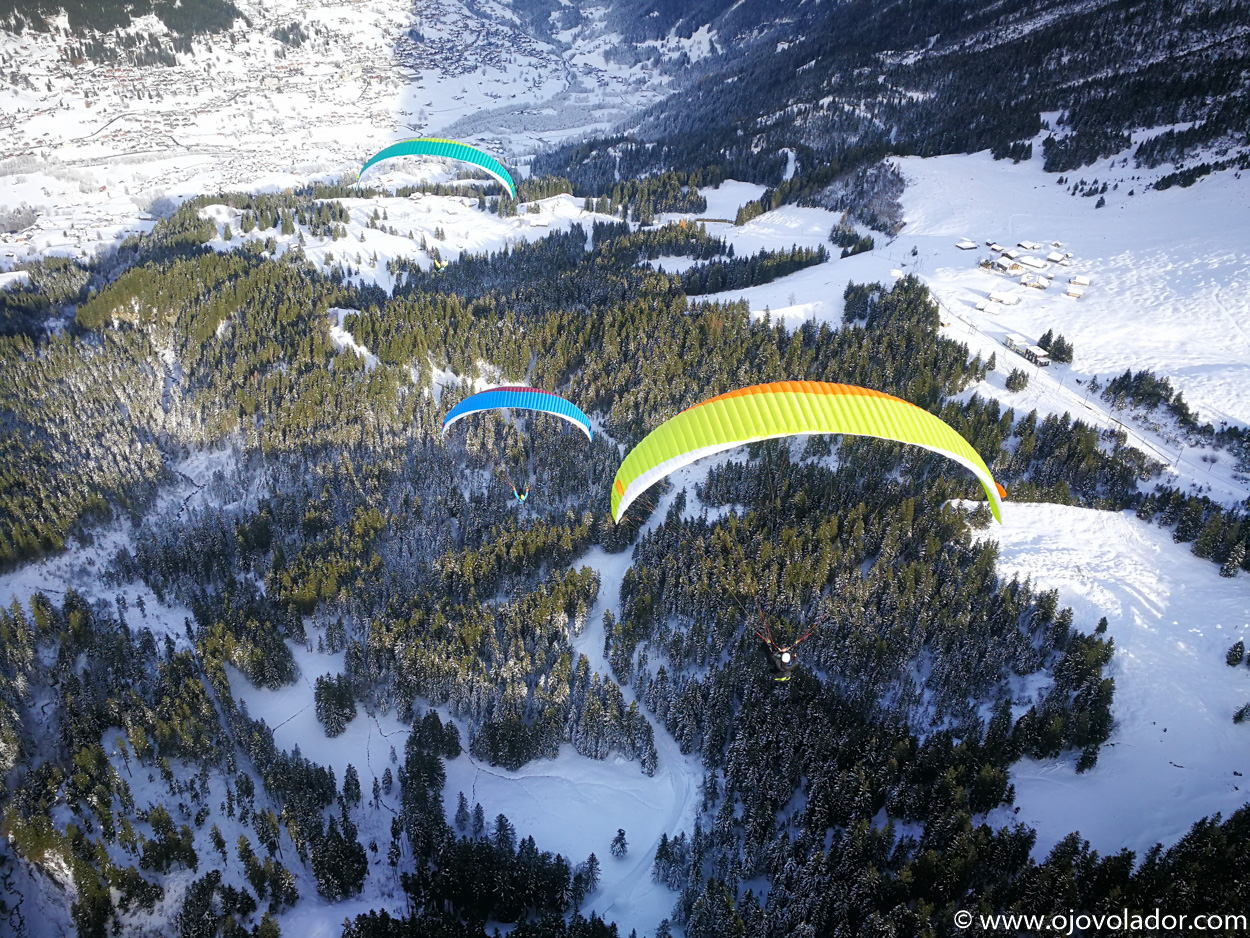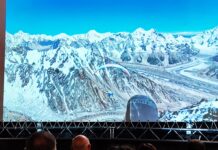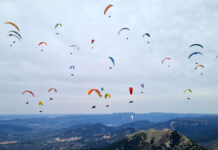At the end of the autumn 2017, we were invited by Advance to be among the first to meet their new high EN B paraglider, and to do a couple of winter flights with it in the Grindelwald and Jungfraujoch area, in the heart of the Alps. There, we heard all the details of design, development and construction from the design team of the renowned Swiss brand. And most importantly, we did a couple of simple but very revealing flights -to which we then added other good test flights in more thermal conditions -with the Iota 2 size 29, with a range of 105-128 kg.
The Iota 2 comes with a firm declaration of intent from Advance: To be the most efficient EN B glider to fly 200 km. What does this mean? Essentially, that on this occasion the design, simulations, configuration, and even the materials are carefully thought-out for the new Iota to offer the most advanced characteristics to climb and the maximum performance in glide ratio at speeds between 40 and 50 Km/h. So far the letters, let’s see the action.
Design features
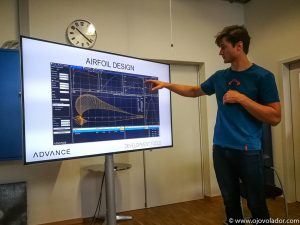
The Iota 2 is a direct heir of the Sigma 10 (EN C). After hundreds of digital prototypes and simulations, Advance chose a planform with flat aspect ratio of 5.6 points and 59 cells.
The construction is, certainly, perfectionist, incorporating several details and some notable features such as the “Double 3D-Diamond shaping”, a modelling system that reduces the vertical forces in the sail, decreases the frowns on the leading edge of the topsail, and prevents the bevel effect. Mini-ribs, rods on the topsail in the C load point area, and an elaborate interior construction allow for a flawless glider with homogeneous distribution of tensions
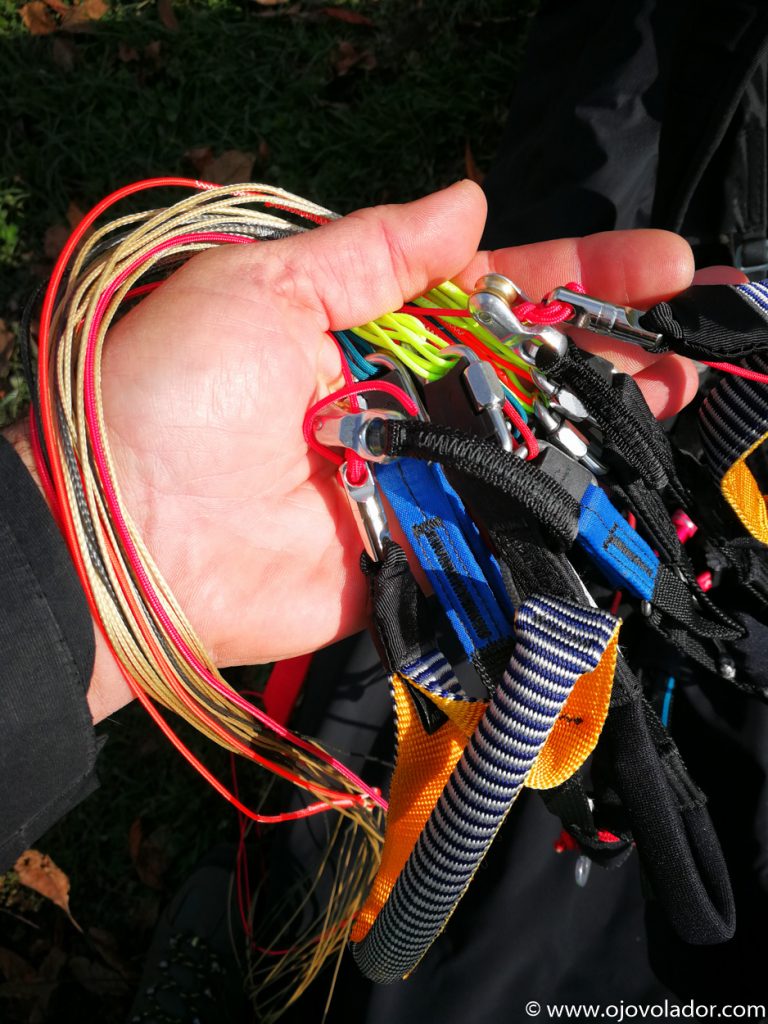
The line set is entirely unsheathed: Edelrid Magix Pro is the latest in technology, its maximum stretch or shrinkage range is just 0.2% (much better than Lyros and Dynema lines), which means that over time it is not necessary to “trim” the lines. According to Advance, it is a “zero” maintenance line set, practically “eternal”. In addition, these lines are coloured to easily identify A, B, C and wing tips.
Risers
The three-line risers of the Iota 2, with the finishes and perfectionist Advance style, incorporate handles on the C-risers to manage the pitch as its more significant innovation.
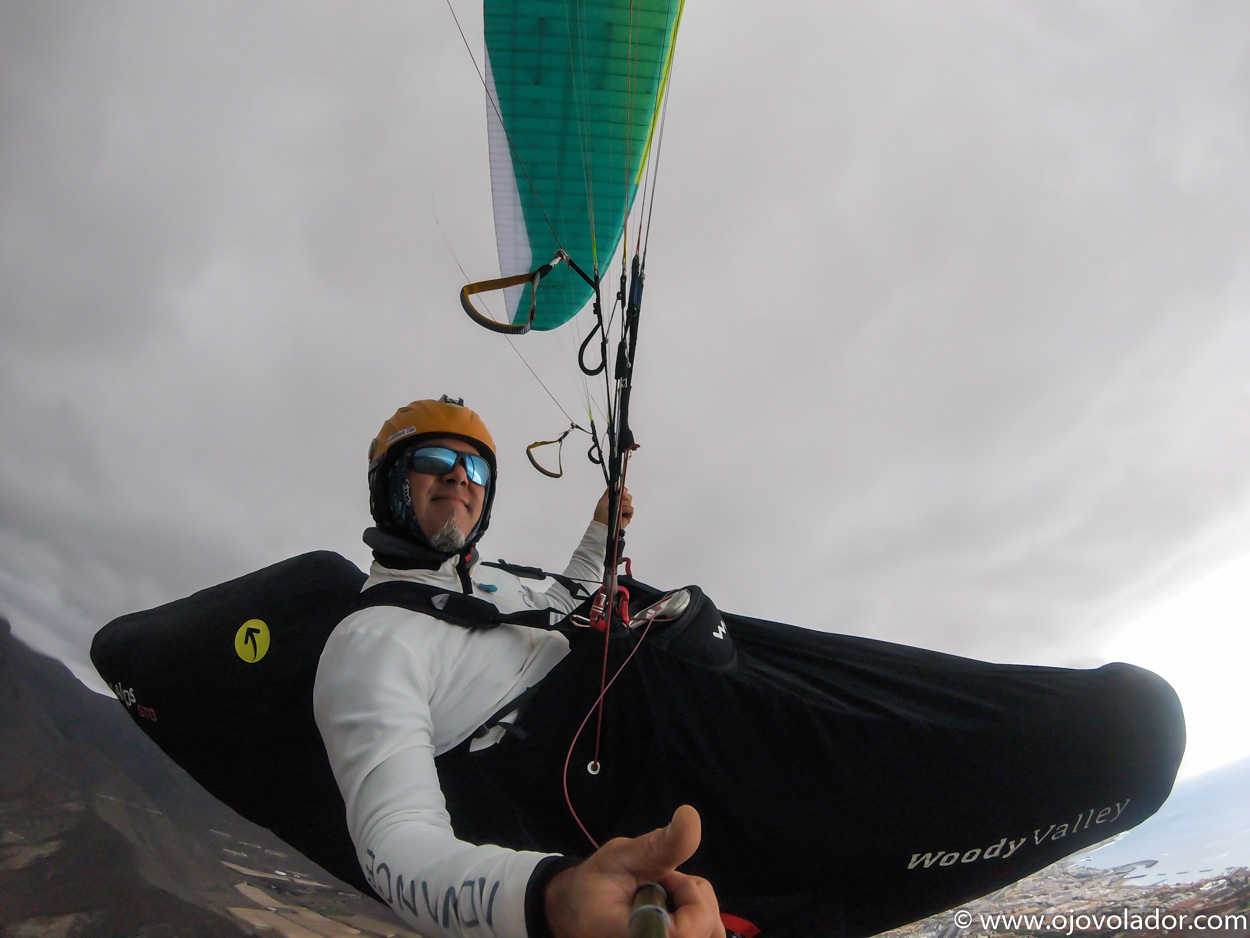
These handles are very useful when flying XC, as this glider was born to fly accelerated and thanks to them it is possible to develop a “bouncing” handling at a very 2-line-style.
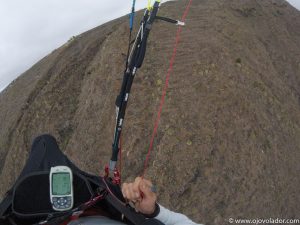
The risers are slim, although the hang point to the karabiner is wide, and are colour coded. The speed system has two phases and has the SPI speed and glide indicator of the house (on the risers) that helps you fly at the best speed depending on the wind and thermal quality of the day. A sort of Advance trademark ‘Speed-to-Fly’ system. Simple but effective.
Inflation and take-off
From the first inflations on the snow, we could see the smooth, good-natured character of the new Iota.
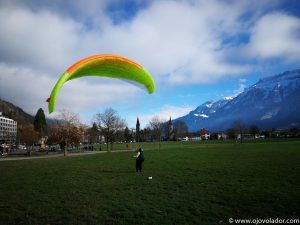
A slight tension is enough for the wing to start the ascent. It does it progressively, and when it’s over the head it barely asks for inputs.
In this sense, the Iota 2 fits perfectly to what we expect from an EN B glider; it is stable and balanced so that each take-off is practically children’s play.
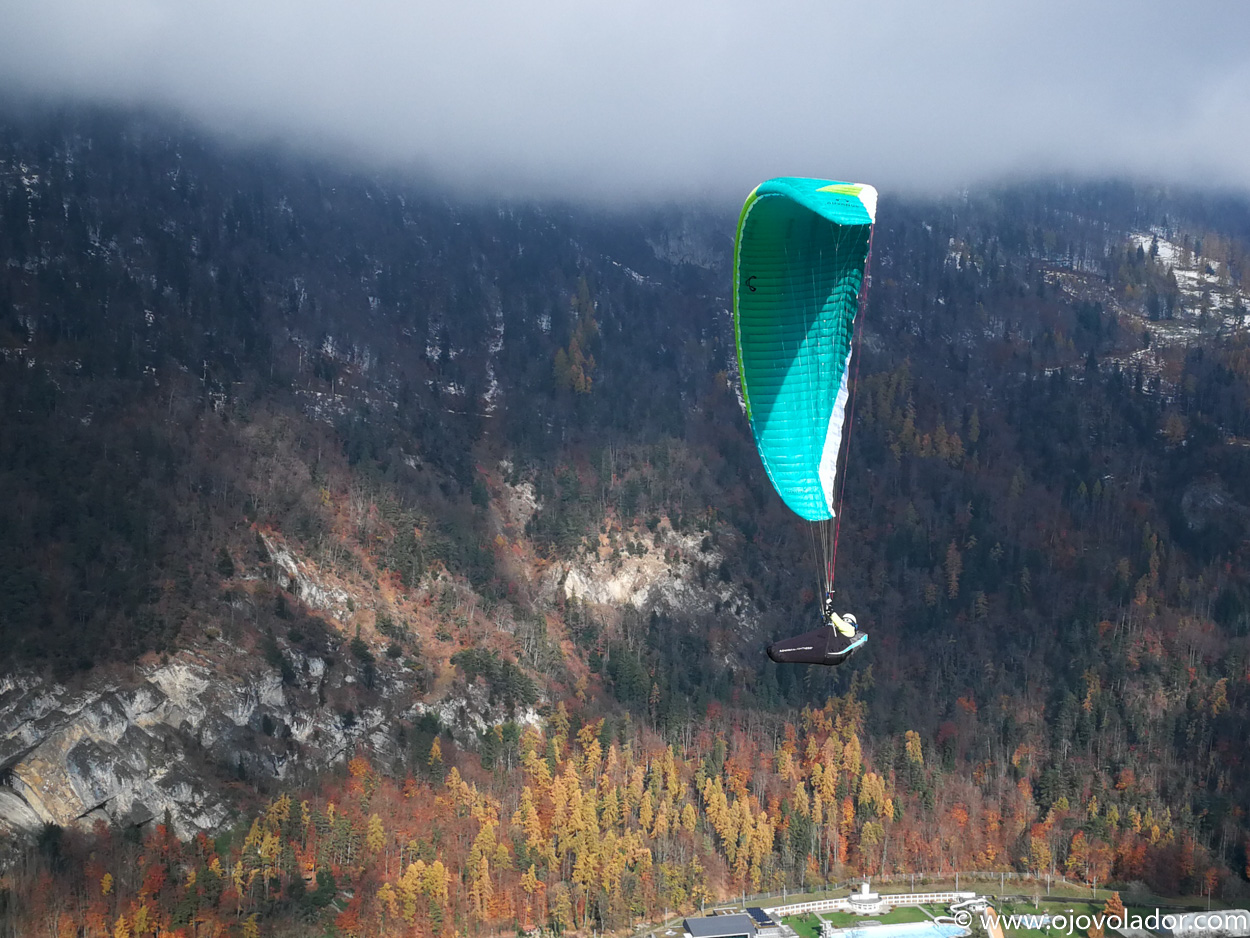 In the Air
In the Air
In the test flights I did with the second edition of the Iota, I confirmed many aspects with complete certainty. The first sensation is that we float efficiently, this wing boasts inner pressure, but the handling is not dry nor has too much tension. Additionally, the overall feel is fluid and the Iota 2 moves precise and smoothly in the air.
There are two features that particularly impressed me when I tried the high EN B wing from Advance. One of them is its extraordinary glide ratio, of which I will talk about later, and the other, the turning behaviour.
In the first thermal flight I did with the Iota 2, conditions were very low, with small bubbles, breezes and few and apart thermals; so when I saw myself climbing on each sigh, staying effortlessly in soft and narrow cores, I realized how brilliant this paraglider is.
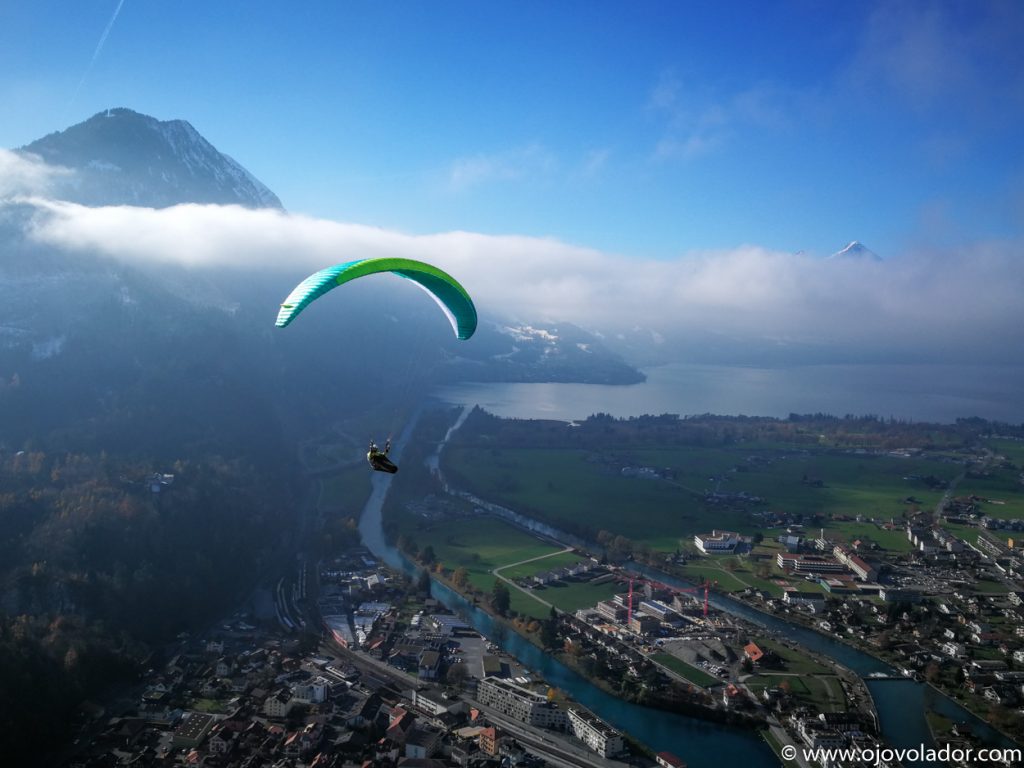
Besides, to confirm my sensations, at times I shared the air with paragliders of different levels and, despite being in the same areas, it was not difficult for me to outperform them. I felt comfortable, just 20 cm of brake are needed to centre the faintest cores. The Iota 2 seems to float and move at will by the thermal; each wing side conveys what goes on in the air allowing you to decipher the lifts to make the most of every turn.
High-end glide ratio
In that first and glorious flight with the Iota 2 -a long transition in the middle of the Swiss Alps from Jungfrau to Interlaken-, I was already impressed by the glide ratio of this glider, I actually had the feeling of getting much farther than I had previously estimated. A feeling I have only had when flying more advanced paragliders.
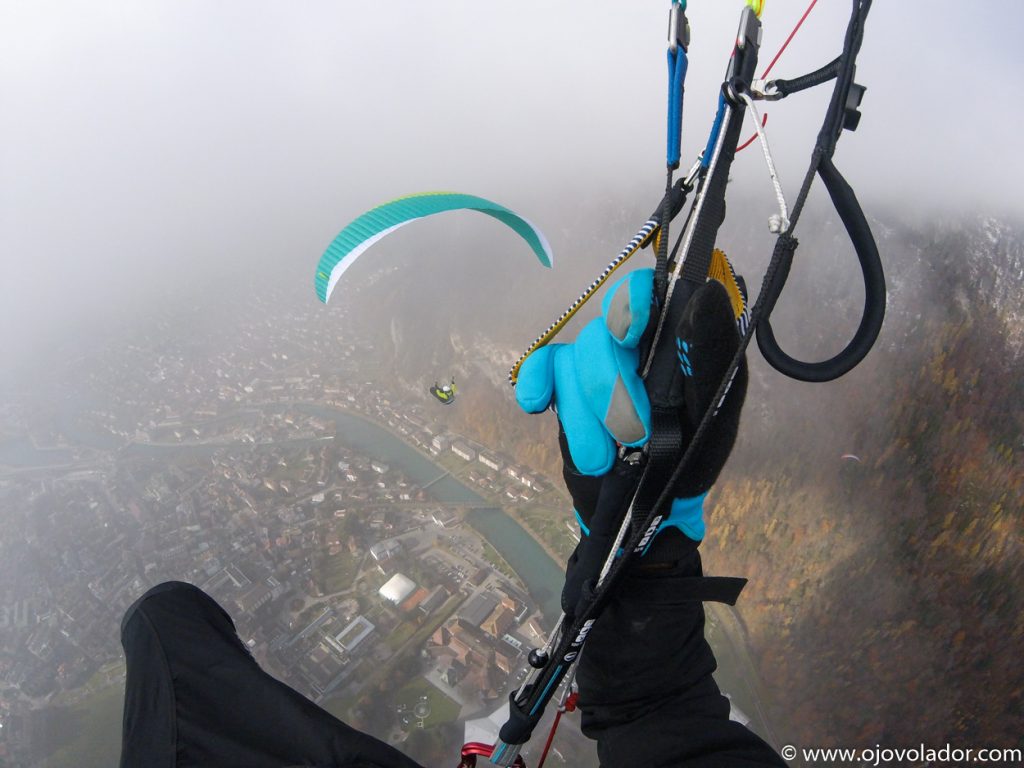
This wing is extremely clean and efficient, the pitch stability is remarkable. We have a glider that offers a mild surge forward in turbulence, thanks to Advance’s shark nose.
The extremely flat polar coupled with an easy and efficient accelerated-flight management using the C handles, allow you to take advantage of advanced flight techniques such as the bouncing, and thanks to this it is possible to squeeze the glide to the maximum, especially in rough air.
After the flights I made with the Iota 2 I can say without batting an eyelid that the Iota 2 offers outstanding glide of more than 10 points. We still have to see what else comes out in 2018, but in my view the Iota 2 is the benchmark in performance in the B class at the moment.
Security
The same pitch stability that makes it so effective in transitions allows the Iota 2 to be very good-natured, dampened and predictable. It has no tendency to go wild, and with some active piloting we will always have it under control.
In my flights I tested slow flying to the point of pre-stall and parachute entry. The whole manoeuvre is very healthy: during the first travel the brake hardens gradually, and with your hands at the height of the hips we notice how the plunge arrives. At this point you can cause a stabilized stall or recover level flight. And this the Iota 2 does it smoothly, the surge is soft “biting” forward. A very positive feature when navigating in rough air, as we learned later.
Induced collapses open immediately and barely deflect the flying course.
In summary, regarding safety we can place the Iota 2 as a medium EN B, i.e., it is an accessible glider. My advice for the less expert pilots is to be careful when they come to land, as they will find a long, long final glide…
Speeds
We get the maximum glide ratio of the Iota 2 at trim speed or with a touch of the speed bar, but we find a flat polar curve. This means that from 39 to 50 km/h we keep almost the same performance in glide, which translates into a fast and very efficient flight, especially in wind-face sections.
The speed system is soft and very usable; besides, the wing keeps its inner pressure and solidity without showing a wrinkle or vibration. This allows you to step on the bar to the top without the slightest hint of stress. The speed system travel is fully usable both in terms of performance and security.
The only drawback I found to the Iota 2 is its maximum speed of around 50-52 km/h, which is about 2 km/h less than many current EN B wings.
Conclusion
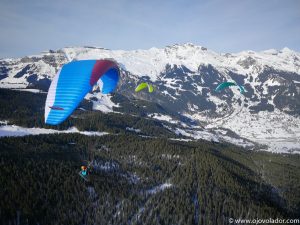
During the last years the Swiss manufacturer have created very balanced gliders, with good turning behaviour, safety and good performance, although without getting to be considered the best performers… But this time Advance decided to do a change of direction: The Iota 2 was conceived for the best possible performance in cross country flights, and for that they have endowed it with the best climbing features and the best possible glide ratio for the EN B class.
For whom
The Iota 2 is a XC machine, and not only for intermediate pilots or those in progression. The feel, turn, glide and comfort of stress-free flying make the new Iota greatly attractive to more experienced pilots who wish to have top level performance, without sacrificing a great compromise in security.
The +: Top glide of the EN B class. Turning and ability to climb.
The –: Limited top speed. It is an exquisite glider, and its price reflects it.
Technical Data Iota 2
| IOTA 2 | 21 | 23 | 25 | 27 | 29 | |
|---|---|---|---|---|---|---|
| Flat surface | m2 | 21.8 | 23.7 | 25.7 | 27.7 | 29.7 |
| Projected surface | m2 | 18.8 | 20.4 | 22.2 | 23.9 | 25.6 |
| Recommended takeoff weight | kg | 65 – 75 | 75 – 85 | 85 – 97 | 97 – 110 | 110 – 125 |
| Certified takeoff weight | kg | 60 – 77 | 70 – 88 | 80 – 100 | 92 – 114 | 105 – 128 |
| Glider weight | kg | 4.3 | 4.6 | 4.85 | 5.15 | 5.4 |
| Span | m | 11.1 | 11.5 | 12 | 12.5 | 12.9 |
| Projected span | m | 8.9 | 9.3 | 9.7 | 10.0 | 10.4 |
| Aspect ratio | 5.6 | 5.6 | 5.6 | 5.6 | 5.6 | |
| Projected aspect ratio | 4.23 | 4.23 | 4.23 | 4.23 | 4.23 | |
| Number of cells | 59 | 59 | 59 | 59 | 59 | |
| Certification | EN B | EN B | EN B | EN B | EN B |
+Info: www.advance.ch


